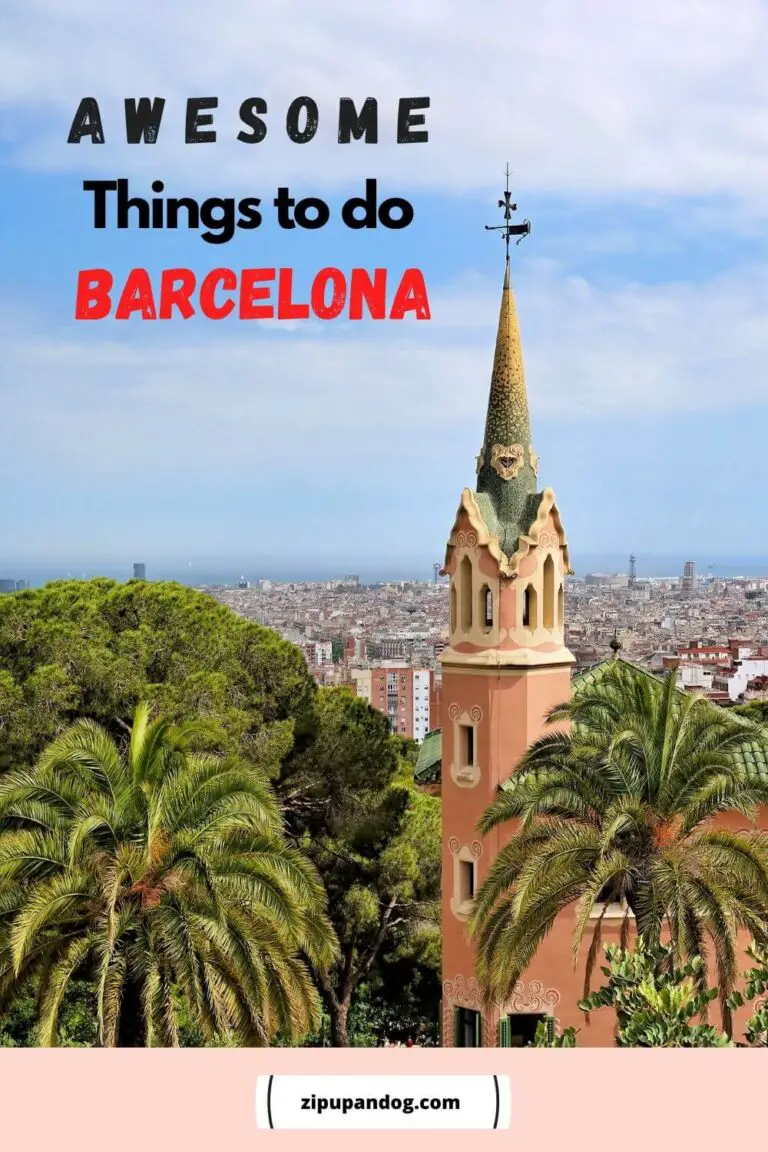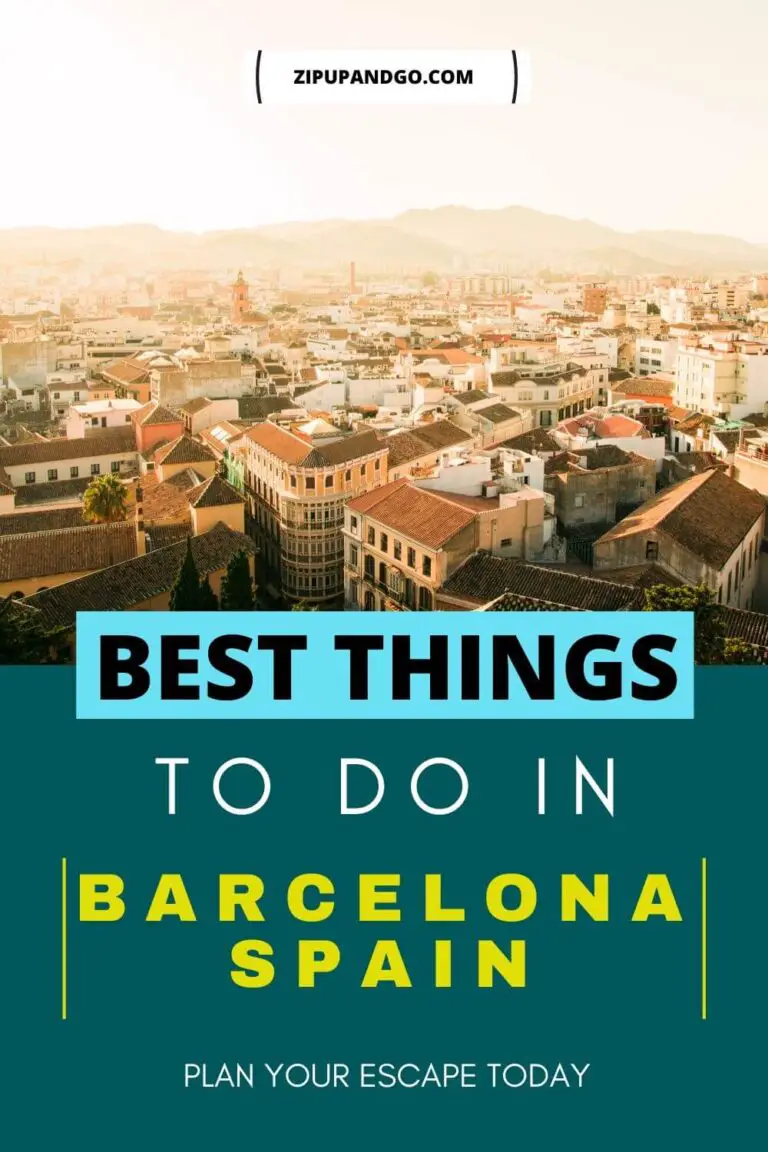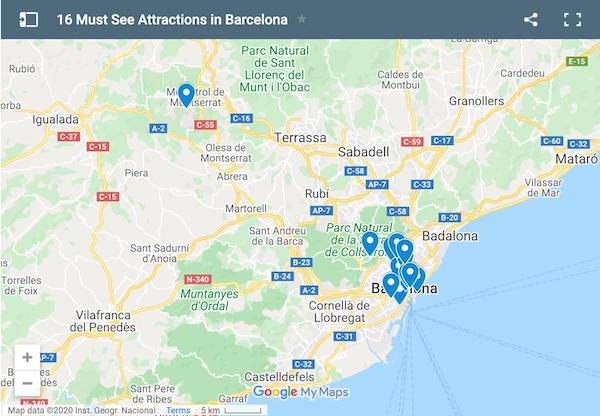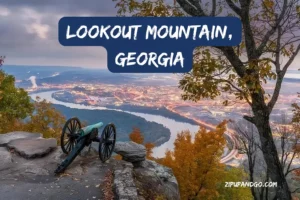16 Must See Places in Barcelona Spain You Should Not Miss!
Planning a trip to Barcelona? Yes why not!
Considering that you will be able to enjoy a city break plus a beach holiday in one vacation, Barna is one of the top destinations in Spain and Europe, and rightly so.
Home to the stunning works of Gaudi, amazing tapas and a lively vibe, Barcelona is unsurprisingly at the top of many a bucket list.
In this post, we have round up a group of travel experts to share what they think are the top must see sights in Barcelona. If you need some inspiration and ideas on what to do in Barcelona, you need to check the rest of the article out!
Let’s Zip Up & Go!
Get a copy of the Google Map!
Here is a Google Map that contains all the places covered in this Barcelona list.
How to use: Take note you will have to be signed in to your Google Account.
- Click on the map below and it will open up in a new window
- It is now saved to your account
- If you wish to access it again in future, click on the menu and select “Your places”. The map is saved on the “Maps” section
Expert tip: Be sure to download offline maps in Google Maps when you have an internet connection. You might not have data or access to WiFi, and the offline version will come in super handy.
What's covered in this post
- 16 Must See Places in Barcelona Spain You Should Not Miss!
- Get a copy of the Google Map!
- 1. Parc Guell
- 2. Barcelona Cathedral
- 3. Barceloneta Beach
- 4. Picasso Museum (Museu Picasso)
- 5. La Boqueria Market
- 6. Montjuic Castle
- 7. Montserrat
- 8. Placa Reial
- 9. Gaudi Houses
- 10. La Sagrada Familia
- 11. Bunkers del Carmel
- 12. Museum of Urban History (Museu d’Història de la Ciutat)
- 13. El Born area
- 14. Magic Fountain
- 15. Sant Pau Recinte Modernista
- 16. Tibidabo amusement park Barcelona
- Logistics before visiting Barcelona Spain
- What will you be visiting in Barcelona?
1. Parc Guell
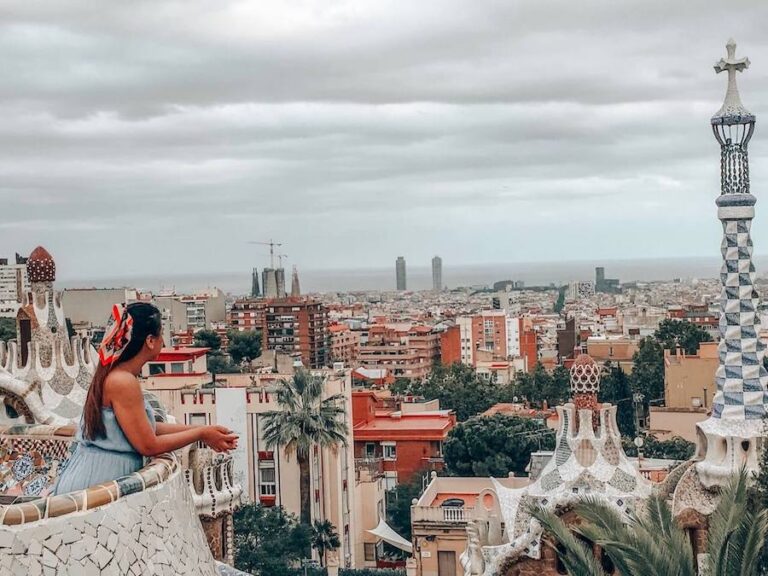
One of the must see places in Barcelona is the stunning Parc Guell. Parc Guell is the creation of Catalon’s hero – Antoni Gaudi, and is one of the popular tourist attractions in the city.
As the name suggests, it is a park. But what is unique about the site is the stunning mosaic artwork that was created by Gaudi.
The original plan for Parc Guell was to serve as a residential community for the wealthy. It included housing plots in neat grids, whilst being surrounded by nature and greenery all around.
The park itself is free to enter for locals and visitors to the city. It is a lovely oasis, away from the hustle bustle of the city centre of Barcelona.
However in order to admire Gaudi’s work and the museum, a special ‘ Monument Zone’ was created, and an entry fee applies to visit this area of the park.
Being a busy attraction it is recommended that you book your tickets online, and prior to your arrival.
You can decide what time you would like to go in. Your tickets will be provided with time-entry slots. This is done to prevent chaos or a huge crowd inside the monument zone.
It is definitely worth paying for an entry ticket as you can also enter the Gaudi museum, as well admire his creations. Don’t forget to capture an Instagrammable shot right here!
Another pro tip is to book an entry ticket for the evening. Evenings at the Park Guell are not crowded, plus you get to soak in some pretty awesome sunset views from up there!
Mayuri from To Some Place New
2. Barcelona Cathedral
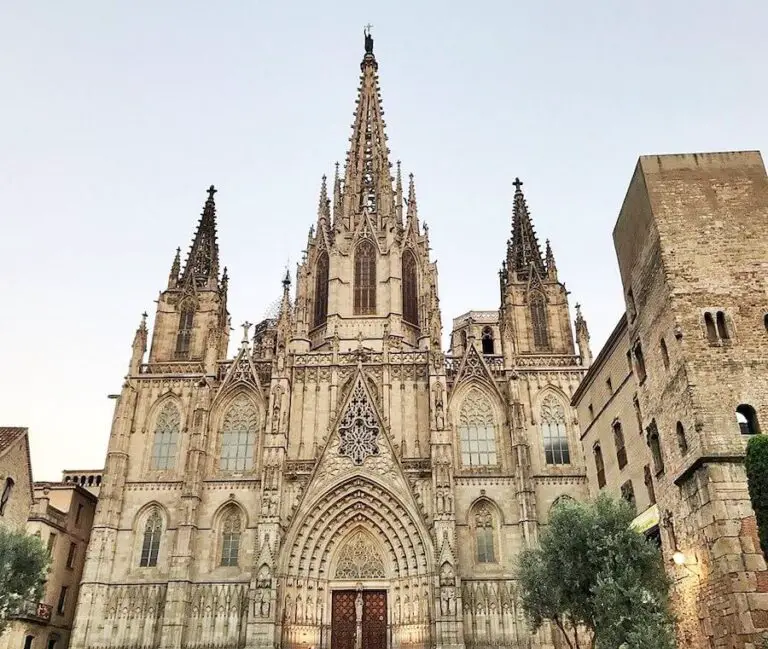
The Barcelona Cathedral, also known as the “Cathedral of the Holy Cross and Saint Eulalia”, is a Gothic cathedral that’s located at the Pla de la Seu.
This church is an iconic landmark situated near the Gothic Quarter and is a must-see place in Barcelona. The cathedral is dedicated to the young virgin saint named Eulalia who had suffered martyrdom in the Roman era.
Construction of the cathedral began in 1298 and took 150 years to complete. The church is also a seat of the Archbishop of Barcelona and hence, it assumes significant religious importance.
The most notable architectural feature of the cathedral is the presence of gargoyle sculptures of mythical animals on the roof.
This church has an attractive facade, with carved sculptures and beautiful stained glass windows greeting you at the entrance.
The interior of the church is stunning with a high vaulted ceiling, a massive nave, and arches that shine bright in the evening sunlight, giving the cathedral a surreal golden appearance.
Other major attractions in the church are the nave and the organ, the golden and green choirstalls, the Chapel of the Holy Sacrament and the Holy Christ of Lepanto, the cloister, and the roof.
The highlight of the church, however, is the cloister.
Here you’ll find palm trees, a fountain, and several geese lounging around.
You can also access the roof via an elevator and enjoy gorgeous views of Barcelona city. The entrance fee per person is 7 Euros.
As far as the dress code is concerned, you need to cover your shoulders and legs. Avoid sleeveless tops and shorts and carry a scarf with you to cover up.
Pro tip – Visit the cathedral late in the evening as there are lesser crowds and you get the best photos during this time.
Vaibhav from The Wandering Vegetable
3. Barceloneta Beach
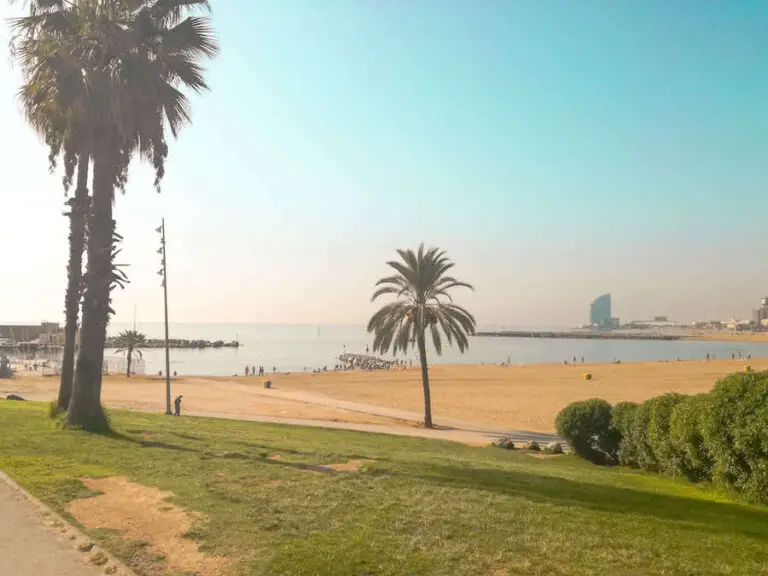
Barcelona is full of beautiful sights, amazing activities, and offers a lot of unique things to do.
However, many visitors are drawn to Barcelona simply for a little relaxation. If that’s the case, the Barceloneta Beach is just the place to visit for you.
The beach is located directly in the city (in the Barcelona neighborhood of Barceloneta) and can be easily reached on foot or by public transport. There are various bus stops and two metro stations near the beach.
The beach itself is well attended in every season, and there are visitors of all ages. Therefore, there are also many offers in this area.
Whether surf shops, sports activities, cafes, or restaurants, there is something for everyone. So it can be wonderful to sit on one of the terraces on the coast and enjoy a refreshing beer or a delicious coffee with a view of the mediterranean sea.
But you can also join one of the many sporting events such as yoga or the volleyball players who are having group activities here all year round.
In the summer months, the beach is also perfect for swimming. The water is usually pleasantly cool, and the waves are not too big.
But also for people who don’t want to just lie in the sun all day, the beach offers excellent walking opportunities. There is a little beach path along the whole beach.
You also have the option to rent a bike and ride along the coastline to the nearest beaches in town.
Vicki from Vicki Viaja
4. Picasso Museum (Museu Picasso)
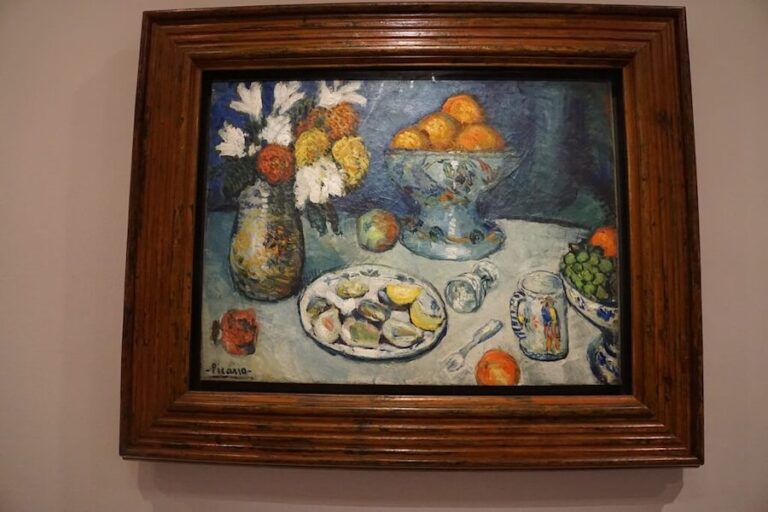
The stunning Museu Picasso in Barcelona is a real must-see as the gallery displays the works of renowned artist, Pablo Picasso, from his early years right up until his death in 1973.
The collections show the strong relationship that Picasso had with the city of Barcelona, with many pieces being inspired by his time here in Catalonia.
With over 4000 pieces on display within the gallery, the Museu Picasso shows a whole host of different styles.
What’s really interesting about this museum is that it doesn’t just feature Picasso’s classic Cubist works of art, but that it also presents his earlier works such as portraits he created when he was a teenager.
Seeing the progression of styles and voices that Picasso used over the years really goes to show what prolific talent he had and can be a great source of inspiration for aspiring artists.
Even if you’re not necessarily a Picasso fan, there’s sure to be some works within the museum that you admire or move you in some way.
Not only are the paintings and drawings within the museum fascinating, but the building itself is a sight to behold too!
With stone walls, palm-laden courtyards, internal cloisters and cave-like gallery rooms, the Museu Picasso is a wonderful attraction for people of all ages and interests.
While the Picasso Museum can be a little difficult to find (if there’s not an obvious queue out of the door), the collections are well worth the time and effort and it’s good to give yourself a few hours there to really enjoy art and the atmosphere.
Enter for free with the Barcelona Card.
Chrisoula from Historic Europen Castles
5. La Boqueria Market
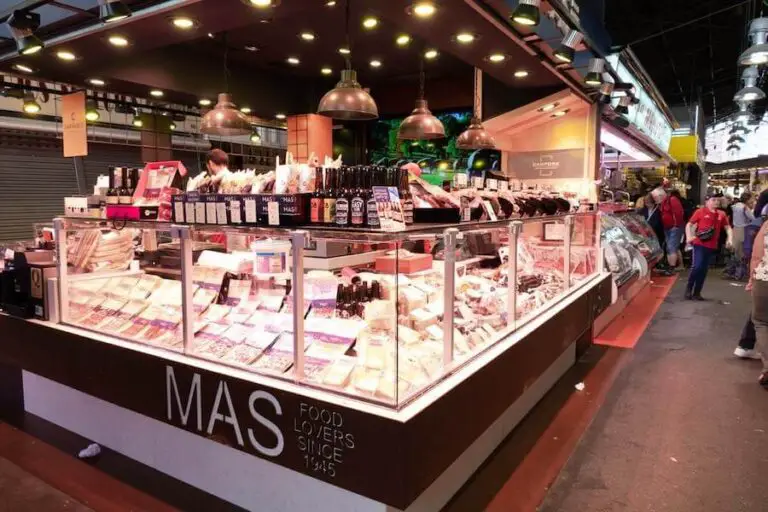
Officially the Mercat de Sant Josep de la Boqueria, La Boqueria is probably one of the most visited places in Barcelona.
This large public market dates back to at least 13th century boasting with an abundance of fruit, vegetable, meat, and fish stalls along with a number of tapas bars.
With the entrance from La Rambla, another touristy pedestrian street of the city, the Boqueria market gets very crowded.
Therefore, if you want to beat the crowds come here as early as possible, sometime around breakfast.
Unfortunately, the bars here don’t take reservations, so it’s a first come first serve bases.
Being the biggest market in Barcelona, the origin of the market starts in 1217, when the first tables to sell meat near the old city gate were installed.
From 1470 and onwards, the market was known as the pig market named Mercado Bornet. However, over the centuries the layout and sold products have changed.
The current name comes from the Catalan word “boc” meaning goat, therefore “boqueria” would be a place where goat meat is sold.
Visiting La Boqueria market is a great alternative to snack along and enjoy Barcelona on a budget, as there are plenty of stalls selling all sorts of appetizers if you can’t get a seat at its famous tapas bars.
Baia from Red Fedora Diary
6. Montjuic Castle
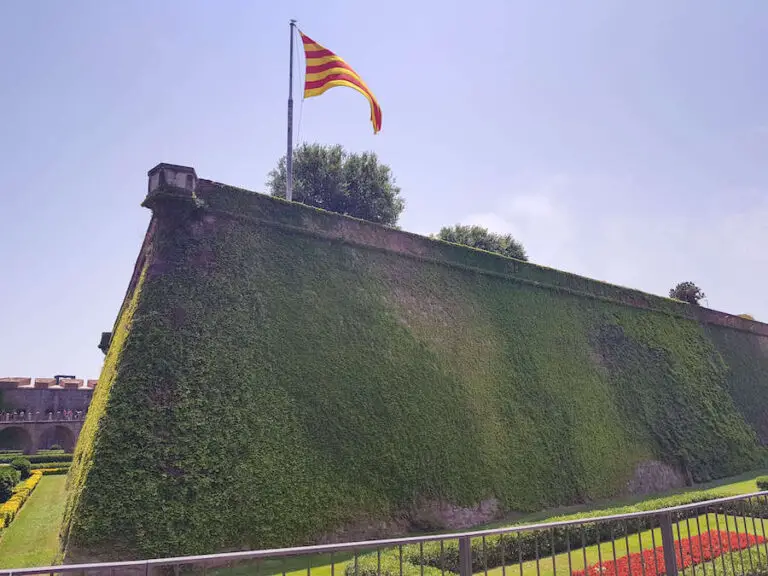
A must-see place to visit in Barcelona is Montjuic Castle.
Located near the Olympic Stadium and easily accessed via the many city sightseeing buses, Montjuic Castle is one of the best things to do in Barcelona with kids.
This old military fortress, dating back to 1640, sits atop Monjuic Hill, affording it incredible views across the city.
While the castle can be reached by walking up the hill, the best way to get to the top is on board the Montjuic Cable Car, or Teleferic de Montjuic. (discounted with Barcelona Card)
You can enjoy bird’s eye views of the city while making your way up to the castle. You can get a one-way ticket and walk back down if you prefer not to get a return ticket.
Montjuic Castle is accessed via a bridge which sits across the now dried but beautifully landscaped moat.
Inside, you will find a large open parade area, around which are rooms which were essential to the life and management of this bastion.
Some of these rooms host permanent and temporary exhibitions, such as those dedicated to the history of the times of Franco.
These exhibitions give detailed narrative accompanied by images of the harrowing life under the infamous dictator.
Take note though, these rooms are not suitable for younger children. You can also climb the tower if you take one of the guided tours.
While there isn’t a huge amount to Montjuic Castle, it is worth going for the views alone. And to see some of the history of the area.
Cath from Passports and Adventures
7. Montserrat
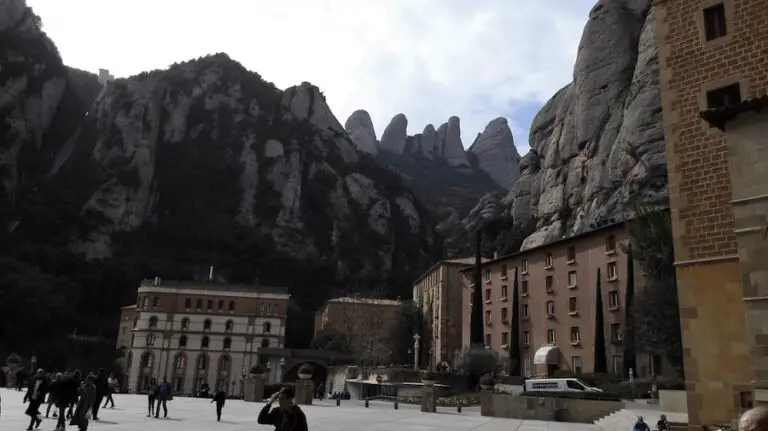
While you’re in Barcelona make sure you take the time to escape the hustle and bustle of the big city and head northwest to the peace and serenity of Montserrat.
The quickest and most scenic way to get there is to take the R5 line from Placa Espanya station to either Aeri de Montserrat, where you will take the cable car up the mountain, or to Monistrol, where you will take the funicular or cogwheel train.
Alternatively, you can consider going on a guided tour that takes care of the transport and includes a guide to bring you around.
There are stunning mountain views from both options. We suggest you go up the mountain one way and come down the mountain the other way. The trip will take one to two hours each way.
Once at the top (4055 feet/ 1256 m high), you have plenty of options for places to go and things to do.
Montserrat mountain was established as a national park in 1987, and if you love hiking there are plenty of mountain walks that will suit all levels of fitness and great for the wildlife photographers amongst you.
The Benedictine Monk retreat at Montserrat is situated on a unique rocky mastiff and monks still live there. It dates back to the 10th century and has great religious significance in Spain. The Black Madonna wooden statue in the basilica is a must-see for pilgrims.
It is said to have healing powers. There is plenty to see in and around the basilica, the church, the museum, the chapel, and if you’re lucky you’ll get to hear an exceptionally good choir singing in the basilica.
Get tickets to the Monastery & Museum here.
Maureen Spencer from “So Many Places! So Little Time!”
8. Placa Reial
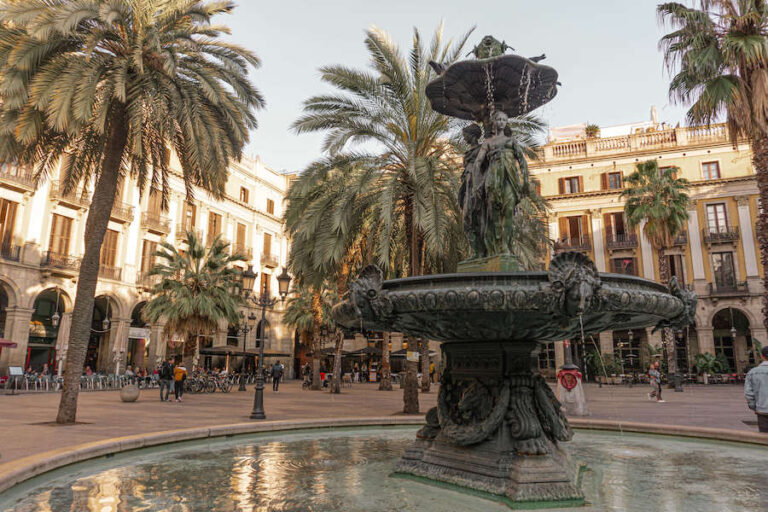
Plaça Reial is located in the Gothic Quarter, near the lower side of Barcelona’s most famous street, the La Rambla.
Being a central venue that’s also steps away from the seaside, Plaça Reial is very popular for many reasons.
Firstly, the stunning architecture, surrounding the square gives a unique charm, and some real Catalan vibes.
Plaça Reial is covered with palm trees, which makes it even more beautiful, as well as the Fountain of Three Graces that you can see in the middle of the square.
The romantic fountain is one of the highlights of this place, but we can’t forget about Antoni Gaudi, one of the most famous architects in the past two centuries.
While many don’t notice them, when you’re on Plaça Reial, have a look around the square’s lamps. They were one of Gaudi’s very first projects. It is’ indeed true, that he left his heritage all around the city of Barcelona, down to the most hidden gems, as the lamps on Plaça Reial.
This square is also popular for nightlife in Barcelona, by hosting some of the most famous night clubs of the city.
One of the most popular is Jamboree, but you can find here the Karma, and the Sidecar as well. Beside the night clubs, there are popular restaurants and cocktail bars as well around Plaça Reial, such as Nou Pipa Club.
Visiting the square during the day for culture and architecture, or looking to experience the nightlife in Barcelona, either way the Plaça Reial is a must-see place in Barcelona.
Helga from SheGoWandering
9. Gaudi Houses
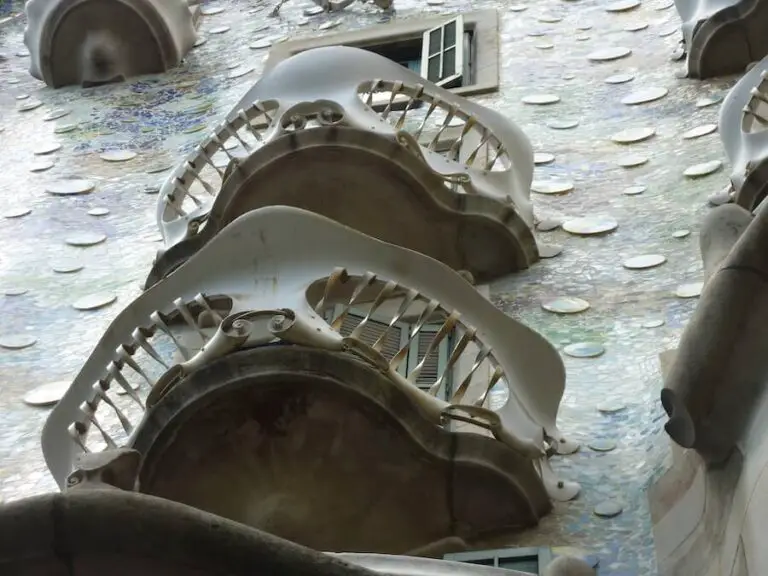
As you know, Gaudí is synonymous with Barcelona, he didn’t just stop at designing parks and cathedrals. He also designed a ton of houses in the city.
These stunning Art Nouveau buildings are scattered all over Barcelona. These include Palau Güell (the same guy also commissioned Park Güell), Casa Vicens, Casa Milá and my personal favourite Casa Batlló.
The UNESCO Heritage site of Casa Batllo has gained several ‘affectionate names’ including the House of Masks, or the Casa dels ossos, which translates to House of Bones.
Looking up at the building from the roadside, it’s really easy to see why. Phantom of the Opera masks instantly popped into my head.
Built in 1877, this residential building is striking. The iconic facade is donned by what looks like balconies wearing these skeleton masks, columns made from bone-like structures and Gaudi’s typical trencadís mosaic in broken green, red and blue tiles.
Typical to lots of works by Gaudi, you’ll struggle to find a straight line or right angle.
The interior of the house is full of beautifully carved doors with ergonomically designed door handles, fitting perfectly into the human hand as well as elegant light fittings, staircases (it looks like a human spine!) and décor.
The top of the building isn’t spared from Gaudi’s imagination and takes inspiration from a scaly dragon and is covered in yet more organic shaped arches, turrets and features covered in colourful tiles.
You can find Casa Batllo along Passeig de Gràcia, and you’ll often see hoards of tourists around here.
If you want to avoid queuing for a time slot to go inside then I highly suggest you book your tickets in advance online.
Becki from Meet Me In Departures
10. La Sagrada Familia
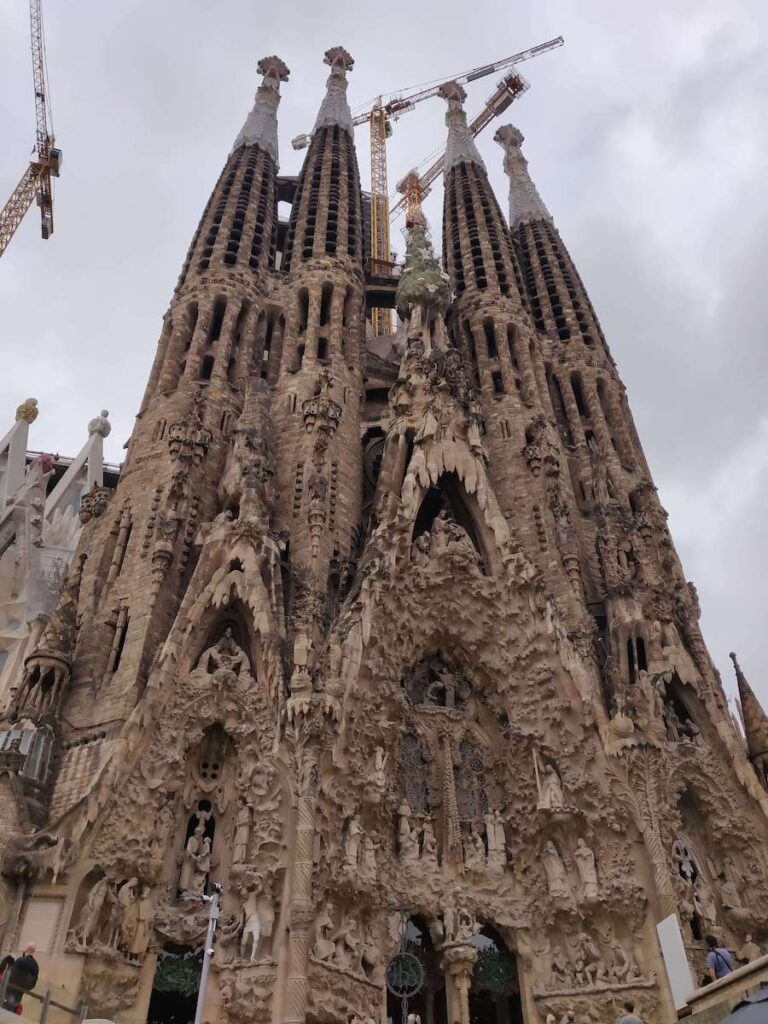
The Basílica de la Sagrada Família, known to the world as Sagrada Familia, is a Roman Catholic church located in Barcelona, one of the fantastic destinations in Europe.
A UNESCO heritage site, this grand, unfinished cathedral is one of the must-visit places in Barcelona and the most visited monument in Spain and among the spectacular Basilicas in the world.
What makes it so special is the unique architecture and design by the famous Spanish/Catalan architect Antoni Gaudi, also the creator of many other monuments in the city.
Gaudi dedicated his life to creating this masterpiece, combining Gothic and Art Nouveau styles. His inspiration for this distinct design is elements of nature that sets it apart from the other cathedrals in the world.
This iconic landmark of Barcelona towers the skyline of the city. You will instantly notice how unique the structure is as you arrive.
If the exteriors already fascinate you, wait till you get inside.
The various distinct geometrical shapes that brilliantly blend, coupled with the influx of lights through the colourful glass is a spectacle to behold.
The best way to appreciate this magnificent monument is to take a guided tour, where you will get to some mind-blowing details of what goes into building this intricately designed Basilica.
The construction of the church started in 1883, but thanks to the untimely demise of Gaudi himself, the Spanish civil war, lack of funds and complexities in the design – the construction is expected to be completed in 2026.
Reshma from The Solo Globetrotter
11. Bunkers del Carmel
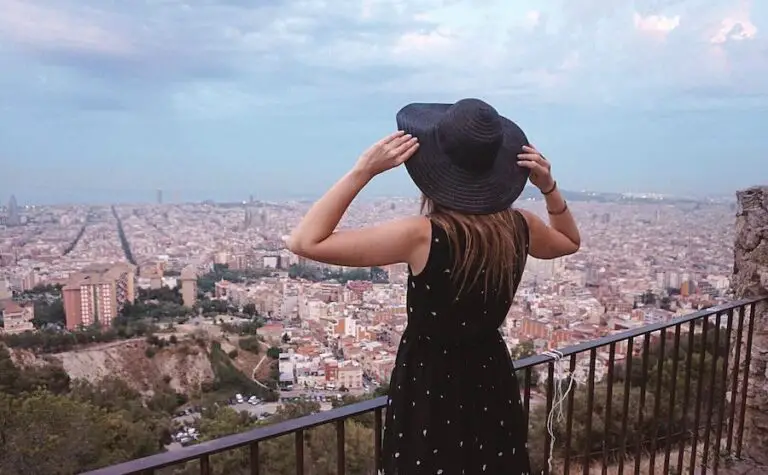
The not-so-secret-anymore Bunkers del Carmel in Barcelona are one of my favorite places in the whole city.
High above the city of Barcelona, in the El Carmel district, this spot offers incredible, 360 degrees views of the city, all the way to the sea on one side, and the mountains on the other.
It used to be a place mostly popular among locals, but the word got out, so now it’s a mix of tourists and locals who come here for a picnic or to enjoy the sunset.
I used to live in Barcelona, and I used to come here every time someone came to visit me! If you want to avoid the crowds, definitely try and come in the morning, especially if you’re visiting in the summer.
But why are there bunkers here?
The Bunkers del Carmel are a series of military bunkers built during the Spanish Civil War. Once Franco took over, he decided to leave the bunkers intact.
On top of coming for the views, there’s a small museum built in one of the bunkers where you can learn a little more about their history.
To get here, take the L4 metro and get off at the Alfons X stop; from here it’ll be a 20-minute walk to the bunkers.
Another metro line you can use to get here is the L5. Otherwise you can take the V17 bus, which will bring you closer to the top if you get off the very last stop.
One last option, you can walk from Parc Guell.
Stefania from Every Steph
12. Museum of Urban History (Museu d’Història de la Ciutat)
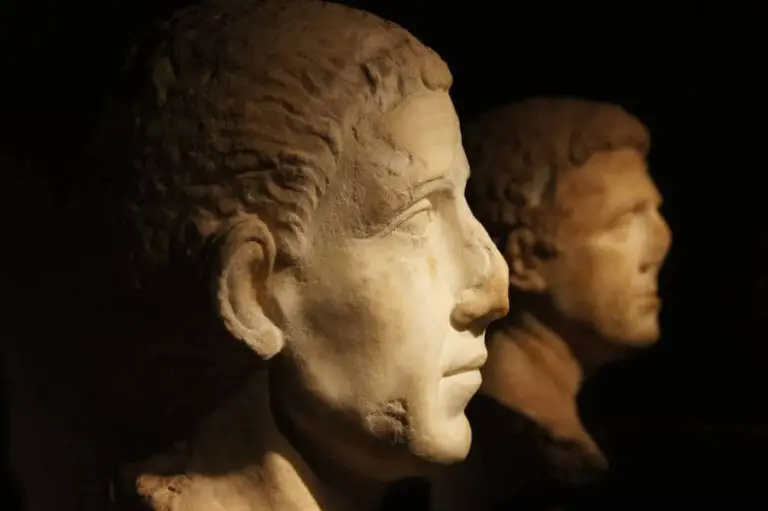
Barcelona is most famous for its 18th and 19th-century architecture, particularly the works of Antoni Gaudí. But did you know that the history of this city reaches back much, much further, all the way to ancient Roman times?
No one is certain exactly how old Barcelona is, or how it was founded.
Competing legends attribute its founding to either Hercules or the Carthaginian general Hamilcar Barca.
What is certain, though, is that by the time of Augustus Caesar, Rome had conquered all of the Iberian peninsula from the Carthaginians and had renamed this settlement Barcino.
The best place to discover more about Barcelona’s ancient Roman history is the City Museum.
It’s actually more than just a museum, it’s also an ancient archaeological site.
The Casa Padellàs, which is the name of the palace that houses the museum, now sits on the Plaça del Rei in the Gothic Quarter but used to be in a different location on Mercaders Street.
To make way for the construction of a new road, the palace was moved stone by stone to its present location and then reconstructed.
But in the process, the remains of ancient Roman structures were found under the building’s new foundations.
These ancient remains are now displayed in-situ in the museum, along with many other precious artifacts from the Roman period.
Entrance is free with the Barcelona Card, otherwise it will be €7 per adult.
I recommend visiting just before lunch so that afterward you can head to the nearby Cat Bar, one of Barcelona’s best vegan restaurants.
Wendy from Nomadic Vegan
13. El Born area
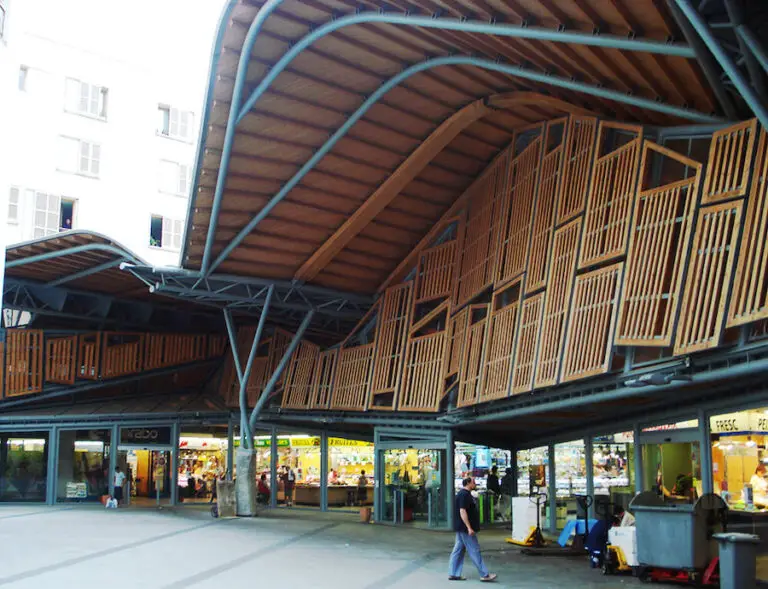
Barcelona is a fairly small city, but at the same time there is so much to see that it can be overwhelming.
Sometimes the most beautiful thing to do is wander around without plans and get lost in its decadent Gothic streets that seem to hide surprises around every corner.
El Born is the best place if you wish to share this view.
Located just outside the old wall of its gothic neighbor on one side, La Barceloneta, and the Ciutadella park on the other, in the last 10-15 years has seen great changes that have made it a touristic area but yet enchanting where you can still perceive real local life.
Here too are many famous attractions such as the Basilica Santa Maria del Mar, the Picasso Museum, the cultural center, or the Palau de la Musica, but the real charm lies in browsing through the old shops, bars, and restaurants of the secondary streets.
In recent years, more and more famous brands and emerging designers have chosen El born as a place to open their trendiest boutiques where they can surprise passersby with innovative and irreverent objects and clothes.
A walk on the Passeig del Born or in calle Montcada must not be missed but try to avoid the recognizable tourist catching restaurants.
If you are looking for tapas, the choice is infinite.
From the best known, although in my opinion overrated, Cal Pep restaurant to the stands in the new Santa Caterina Market in the far north.
My choice would be Sagardi, a Basque cuisine restaurant, where you can stop for a drink accompanied by a huge choice of delicious pinchos!
Clotilde from A Princess Travelling with Twins
14. Magic Fountain
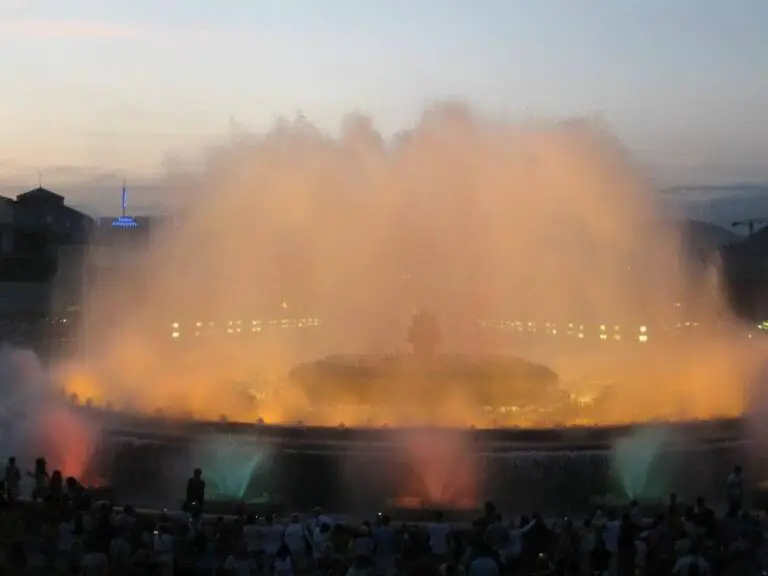
At the top of Avinguda Maria Cristina Street in Barcelona, there is a fountain that is visited by 2.5 million people a year.
Wondering what kind of fountain it is when it arouses so much interest? Well, no less and no more than Magic.
The magical Fountain, or on the Catalan ‘Font Montjuic’, located on the hill of Montjuic in front of the National Palace, in the immediate vicinity of the Plaza de España, arouses great admiration of visitors.
The fountain was given the epithet ‘magical’ because of the sensational spectacle of light, music, and water that take place on it.
It’s really a unique place to visit in Europe.
Furthermore, it was designed by Carles Buigas and built for the purpose of an international exhibition in 1929.
During the Spanish Civil War, it was damaged but was rebuilt by the designer himself in 1955. Besides, it consists of a series of smaller fountains, and the main, the central fountain is 35m in diameter.
The performance that this extraordinary fountain offers consists of sessions lasting 30 minutes each.
It includes three film music, six classical, remixes from the eighties and nineties, and the song ‘Barcelona’ performed by the frontman of the group ‘Queen’ Freddie Mercury.
With an incredible change of colors and lights, which accompany the melodies, as well as jets, the highest of which reaches a height of up to 52 m, leave visitors breathless.
In summer, this music and light spectacle lasts from Thursday to Sunday from 8 pm to 11 pm, while in winter the weekend is reserved for her, from 7 pm to 9 pm.
Mark from Vogatech
15. Sant Pau Recinte Modernista
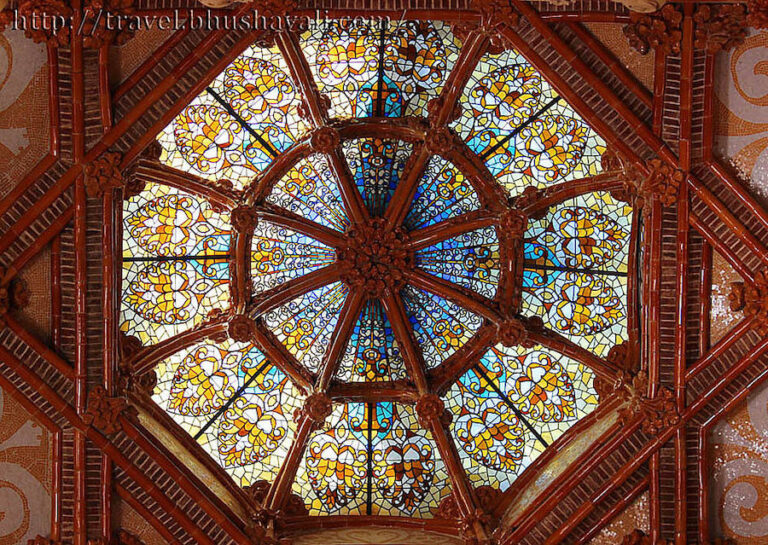
Barcelona is every art and architecture lover’s city! I was always fascinated by Barcelona’s Art Nouveau buildings.
They are such a visual delight. The city has a whopping 7 such buildings listed as UNESCO World Heritage Sites.
5 of those were designed by the very famous Antoni Gaudi and 2 were by Lluís Domènech i Montaner.
One of those 2 buildings is Sant Pau Recinte Modernista Hospital.
The whole place is so rich, so colorful and so beautiful.
The guide explains which rooms were used for which purposes including the wards & operation theatres of the hospital. There’s also a chapel inside the hospital.
Everything is filled with such colorful, vibrant, mosaic work and stained glass.
The most spectacular was the seminar room with a huge, circular stained-glass ceiling.
All of these are such exceptional examples of Art Nouveau in Barcelona.
This building can be accessed today only by guided tours and it is definitely advisable to pre-book the tour in your preferred language otherwise there can be a long wait. This was built in 1902-30 and this was a functioning hospital till 2009.
Since 2009, a hospital has been moved to a new building, and that still bears the same name! So, it is tricky to reach the right place and many people do end up in the modern hospital instead of the heritage building just like I did.
The reception of the hospital has flyers with a printed map of the route to reach the historic site.
Bhushavali from My Travelogue by Bhushavali
16. Tibidabo amusement park Barcelona
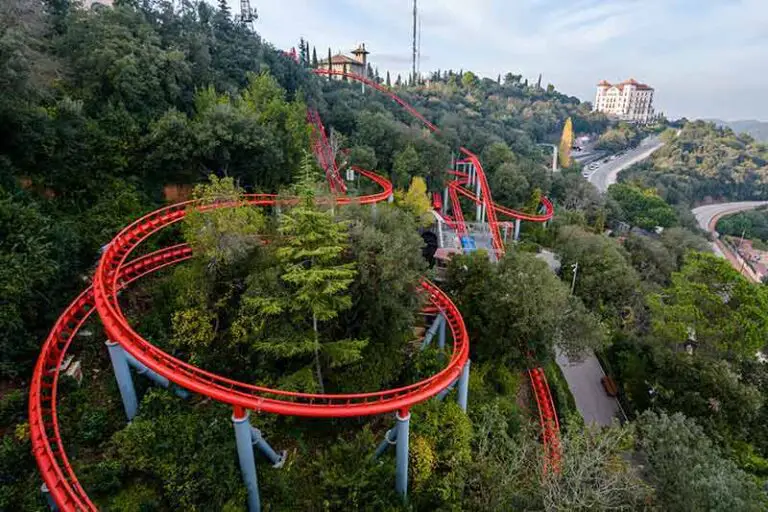
Rising above the Barcelona skyline, Mount Tibidabo is 1,680 feet (512 meters) high and is a famous landmark in Spain.
It’s also a fantastic place to go to enjoy panoramic views of the city towards the coastline.
When planning a visit to Mount Tibidabo, put aside the entire day (or at least half a day).
Besides the stunning view, the top attraction at Mount Tibidabo is one of the world’s oldest amusement parks, which has six zones and several rides that will get the adrenalin pumping such as the Pirate Ship and Russian Mountain.
Besides having fun at the Tibidabo Amusement Park, it’s worth visiting the lovely cathedral of Sagrat Cor.
The cathedral was built in a blend of styles and is stunning to look at, with stonework and stained-glass windows.
Designed by architect Enric Sagnier i Villavecchia, it took almost 60 years to complete. Snap a photo at the Jesus Christ bronze statue, which is similar to the one in Rio de Janeiro.
You can hike up to the top of Mount Tibidabo or take the tram to Plaza Doctor Andreu and then board Spain’s oldest funicular to the top.
To reach the foot of Tibidabo, take a train to Avinguda Tibidabo FGC Station and then board Tramvia Blau, which is an old-style tram.
Grab your tickets to the amusement park here.
Christina from Travel2next
Logistics before visiting Barcelona Spain
Find cheap flights.
Air tickets are usually the bulk of your expenses. Set up an alert and snag cheap fares with Skyscanner.
Find the best accommodation.
Book a place ahead of time to get good rates. Booking.com has transparent fees and excellent rates.
Get free entry to attractions and free transport around the city
Make use of the Barcelona Card to save a bunch during your visit. It includes free entry to many of the main sights, but the real value lies in the free transport you can use in its duration.
Handy travel guide.
For the old school kid in you, get a travel guide book and get lost exploring the city.
Photos.
Your mobile phone can do a pretty good job, but if you need an upgrade, we recommend the Sony A6000 (US) (International)
Travel insurance.
You don’t need us to teach you to be a responsible adult, do you? Get a quote here.
Planned for you activities in Barcelona.
Need a guide to show you and your group around? Lots of operators here to choose from here. You know who they are and how they are reviewed.
More resources to help you.
What other useful travel resources we use when we book our trips.
What will you be visiting in Barcelona?
There are so many great things to do in Barcelona, and I bet you can’t wait to try them out soon!
Let us know which is the top attraction in Barcelona that you will visit!
If you like this post, please help us to share on social media and pin it to Pinterest!
